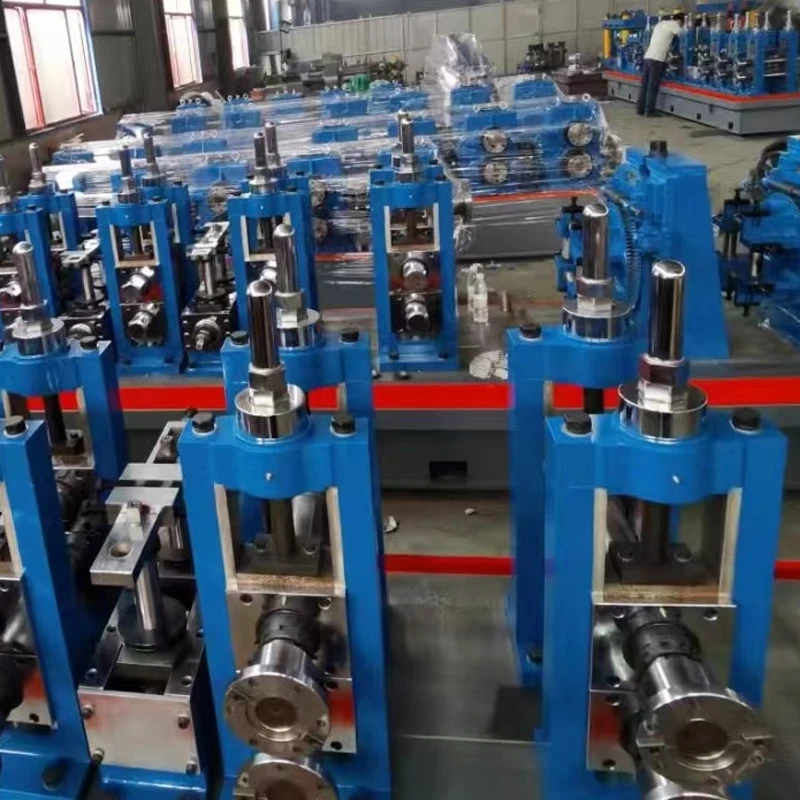tube welding equipment
Tube Welding Equipment A Comprehensive Overview
Tube welding is an essential process in various industries, ranging from automotive to construction and beyond. The quality and efficiency of tube welding operations heavily depend on the equipment used. This article will provide an overview of tube welding equipment, discussing its types, applications, and the technological advancements that shape the industry today.
Types of Tube Welding Equipment
1. TIG Welders (Tungsten Inert Gas) TIG welding is known for its ability to produce high-quality, precise welds. This method uses a non-consumable tungsten electrode and an inert gas—usually argon—to shield the weld area from atmospheric contamination. TIG welders are ideal for thin-walled tubes and materials that require a clean, aesthetically pleasing finish. They are commonly used in the aerospace, automotive, and food processing industries.
2. MIG Welders (Metal Inert Gas) MIG welding is another popular method used for tube welding. This process involves a continuous wire feed that acts as both electrode and filler material. MIG welders are renowned for their speed and versatility, making them suitable for various applications, including structural steel fabrication and equipment manufacturing. They can handle thicker materials and deliver a high production rate, which is advantageous in high-volume environments.
3. Submerged Arc Welders Used primarily for heavy-duty welding applications, submerged arc welding (SAW) involves the formation of an arc between a continuously fed electrode and the workpiece, which is submerged under a blanket of granular flux. This method is particularly effective for welding thick tubes in industries such as shipbuilding and construction. SAW offers deep penetration and minimal fume, making it a preferred choice for larger components.
4. Laser Welders Laser welding technology is becoming increasingly popular in tube welding due to its speed and precision. Laser welders use focused laser beams to melt the base materials and create a strong bond. This method is especially effective for materials that require tight tolerances and can be employed in thin-walled, high-strength tubing applications. Industries such as automotive and electronics frequently leverage laser welding for intricate components.
5. Plasma Arc Welders Plasma arc welding is similar to TIG welding but utilizes a constricted arc to achieve higher temperatures. This makes it suitable for welding a wide range of materials, including metals that respond poorly to conventional methods. Plasma welders are often used in industries that require high-strength and high-precision welds.
Applications of Tube Welding Equipment
Tube welding is integrated into numerous sectors due to its fundamental role in assembling parts and structures
. Key applications includetube welding equipment

- Automotive Industry From exhaust systems to chassis components, tube welding is critical in producing durable and lightweight parts that meet safety and performance standards.
- Oil and Gas Tubing is extensively used for pipelines and containers in the oil and gas industry. The high-pressure requirements necessitate robust and reliable welding processes to ensure the integrity of the structures.
- Furniture Manufacturing Tube welding is often employed in creating modern furniture frames, providing stability and style in steel and aluminum designs.
- Medical Devices Precision is key in the medical device industry, where tube welding is used to fabricate critical components such as catheters and surgical instruments.
Technological Advancements
The field of tube welding equipment has seen significant advancements in recent years, driven by demands for productivity, quality, and safety. Automation plays a pivotal role, with robotic welding systems increasingly utilized to enhance accuracy and efficiency. Additionally, the integration of sensors and artificial intelligence allows for real-time monitoring and adjustment of welding parameters, resulting in consistent weld quality.
Furthermore, developments in material science, such as high-strength alloys and advanced coatings, necessitate adapted welding techniques. Tube welding equipment must continually evolve to accommodate these materials and meet the rigorous demands of modern applications.
Conclusion
Tube welding equipment is integral to various industries, ensuring the creation of robust and reliable components. By understanding the different types of equipment and their applications, manufacturers can select the best solution for their needs, leading to improved productivity and quality in their operations. As technology continues to advance, the future of tube welding holds promise for even greater efficiency and precision.
-
High Frequency Straight Seam Welded Pipe Production Line-BzZhou Xinghua Machinery Equipment Manufacturing Co., LTD.|line pipe steel&welded gas pipeNewsJul.30,2025
-
High Frequency Straight Seam Welded Pipe Production Line-BzZhou Xinghua Machinery Equipment Manufacturing Co., LTD.|High Precision&Automated SolutionsNewsJul.30,2025
-
High Frequency Straight Seam Welded Pipe Production Line - BzZhou Xinghua Machinery Equipment Manufacturing Co., Ltd.NewsJul.30,2025
-
High Frequency Straight Seam Welded Pipe Production Line-BzZhou Xinghua Machinery Equipment Manufacturing Co., LTD.|Precision Welding, High EfficiencyNewsJul.30,2025
-
High Frequency Straight Seam Welded Pipe Production Line|BzZhou Xinghua|Precision Welding&EfficiencyNewsJul.30,2025
-
High Frequency Straight Seam Welded Pipe Production Line - BzZhou Xinghua|Precision Engineering&EfficiencyNewsJul.30,2025


